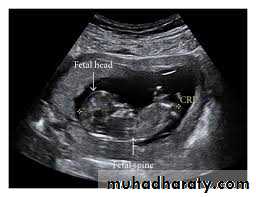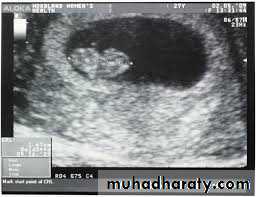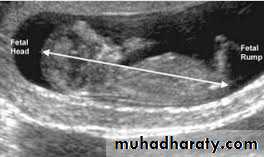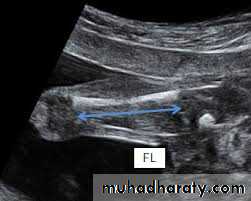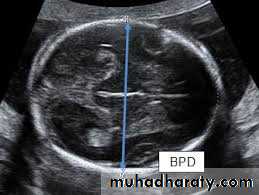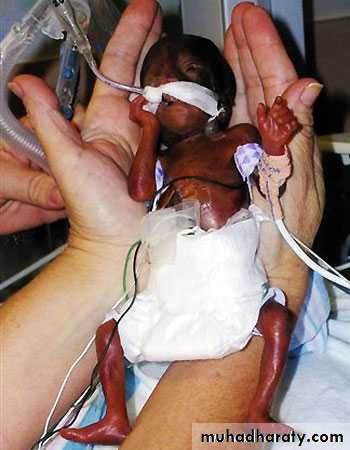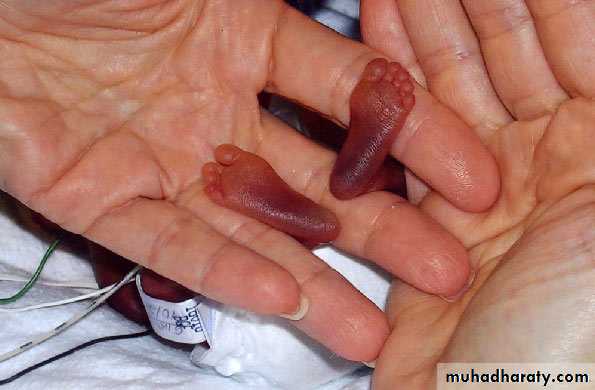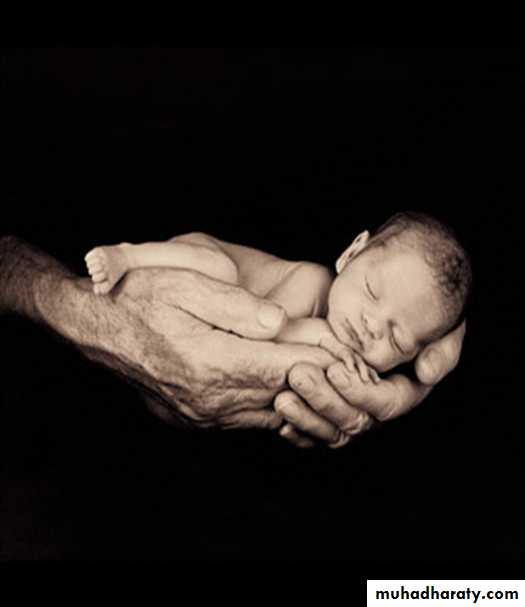Third Month to Birth: TheFetus and Placenta/1
Dr.SumeyaThe period from the beginning of the ninth week to birth is known as the fetal period.
It is characterized by maturation of tissues and organs and rapid growth of the body.The length of the fetus is usually indicated as the crown rump length (CRL) (sitting height) or as the crown-heel length (CHL), the measurement from the vertex of the skull to the heel (standing height).
3 Months
Growth in length is particularly striking during the third, fourth, and fifth months, while an increase in weight is most striking during the last 2 months of gestation.
In general, the length of pregnancy is considered
to be 280 days, or 40 weeks after the onset of the last normal menstrual period (LNMP) or, more accurately, 266 days or 38 weeks after fertilization.For the purposes of the following discussion, age is calculated from the time of fertilization and is expressed in weeks or calendar months.
Monthly Changes
One of the most striking changes taking place during fetal life is the relative slowdown in growth of the head compared with the rest of the body.At the beginning of the third month, the head constitutes approximately half of the CRL
By the beginning of the fifth month, the size of the head is about one third of the CHL, and at birth, it is approximately one quarter of the CHL .
Hence, over time, growth of the body accelerates but that of the head slows down.
third month
During the third month, the face becomes more human looking .The eyes, initially directed laterally, move to the ventral aspect of the face, and the ears come to lie close to their definitive position at the side of the head .The limbs reach their relative length in comparison with the rest of the body, although the lower limbs are still a little shorter and less well developed than the upper extremities.
Primary ossification centers are present in the long bones and skull by the 12th week.
Also by the 12th week, external genitalia develop to such a degree that the sex of the fetus can be determined by external examination (ultrasound).
During the sixth week, intestinal loops cause a large swelling (herniation) in the umbilical cord, but by the 12th week, the loops have withdrawn into the abdominal cavity.
At the end of the third month, reflex activity can be evoked in aborted fetuses, indicating muscular activity.
3 Months
fourth and fifth months
During the fourth and fifth months, the fetus lengthens rapidly. and at the end of the first half of intrauterine life, its CRL is approximately 15 cm, about half the total length of the newborn.The weight of the fetus increases little during this period and by the end of the fifth month is still <500 g.
The fetus is covered with fine hair, called lanugo hair; eyebrows and head hair are also visible.
During the fifth month, movements of the fetus can be felt by the mother .
second half of intrauterine life
During the second half of intrauterine life, weight increases considerably, particularly during the last 2.5 months, when 50% of the full term weight (approximately 3,200 g) is added.During the sixth month, the skin of the fetus is reddish and has a wrinkled appearance because of the lack of underlying connective tissue.
A fetus born early in the sixth month has great difficulty surviving.
Although several organ systems are able to function, the respiratory system and the central nervous system have not differentiated sufficiently,By 6.5 to 7 months, the fetus has a CRL of about 25 cm and weighs approximately 1,100 g. If born at this time, the infant has a 90% chance of surviving.
Parts of the Zygote
4 Weeks
Two Months
6 Weeks7 Weeks
8 Weeks
7 weeks
8 weeks
During the last 2 months, the fetus obtains well-rounded contours as the result of deposition of subcutaneous fat .By the end of intrauterine life, the skin is covered by a whitish, fatty substance (vernix caseosa) composed of secretory products from sebaceous glands.
At the end of the ninth month, the skull has the largest circumference of all parts of the body, an important fact with regard to its passage through the birth canal.
At the time of birth, the weight of a normal fetus is 3,000 to 3,400g, its CRL is about 36 cm, and its CHL is about 50 cm. Sexual characteristics are pronounced, and the testes should be in the scrotum.
3 Months
11 Weeks
12 Weeks
4 months
15 Weeks
16 Weeks
18 Weeks
6 Months
Seven MonthsEight Month
Time of Birth
The date of birth is most accurately indicated as 266 days, or 38 weeks, after fertilization.
The oocyte is usually fertilized within 12 hours of ovulation; however, sperm deposited in the reproductive tract up to 6 days prior to ovulation can survive to fertilize oocytes.
A pregnant woman usually will see her obstetrician when she has missed menstrual bleeds.
By that time, her recollection about coitus is usually vague, and it is readily understandable that the day of fertilization is difficult to determine.
The obstetrician calculates the date of birth as 280 days or 40 weeks from the first day of the LNMP. In women with regular 28-day menstrual periods, the method is fairly accurate, but when cycles are irregular, substantial miscalculations may be made.
An additional complication occurs when the woman has some bleeding about 14 days after fertilization as a result of erosive activity by the implanting blastocyst.
Hence, the day of delivery is not always easy to determine. Most fetuses are born within 10 to 14 days of the calculated delivery date.
If they are born much earlier, they are categorized as premature; if born later, they are considered postmature.
By combining data on the onset of the last menstrual period with fetal length, weight, and other morphological characteristics typical for a given month of development, a reasonable estimate of the age of the fetus can be formulated.
A valuable tool for assisting in this determination is ultrasound, which can provide an accurate (1 to 2 days) measurement of CRL during the 7th to 14th weeks.
Measurements commonly used in the 16th to 30th weeks are biparietal diameter (BPD), head and abdominal circumference, and femur length.
An accurate determination of fetal size and age is important for managing pregnancy, especially if the mother has a small pelvis or if the baby has a birth defect.
Smallest baby in the world born At just 22 weeks
She was 10 OUNCES when born and 9.5 inches. That's just longer than the length of your hand.
Her little feet





















